WWII could have ended differently, had two of the most homicidal dictators in history become allies. It actually started out that way, when the Soviet Union and Nazi Germany signed the Molotov-Ribbentrop non-aggression pact, in August, 1939. That would end two years later with “Operation Barbarossa”, the German surprise invasion of the Soviet Union, beginning on June 22, 1941.
We’re accustomed to thinking of World War II in terms of the European and the Pacific “Theaters”, but the most horrific casualties of the most destructive war in history, took place on the “Ostfront”, (Eastern Front). 95% of all German Army casualties between 1941 and 1944, and 65% of all Allied military casualties from the entire war, took place on the Eastern Front. The bloodiest battle of the Eastern Front, probably the bloodiest battle in all of history, began this day in 1942, in the city of Stalingrad.
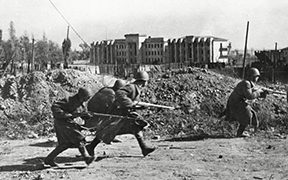
Soviet propagandists called it a “harvest victory”, when most of the cattle, grain and rail cars were shipped out of the city in advance of the German assault.
Most of Stalingrad’s civilian residents remained however, leaving the city short of food, even before the commencement of German attacks. Making things worse, the Luftwaffe bombed Volga River shipping, sinking 32 ships and crippling another 9 in the narrow waterway, cutting off this vital link in the city’s supply chain.
Wilfred von Richtofen, cousin of the famous “Red Baron” of WWI, opened up with his heavy bombers on August 23rd, dropping over 1,000 tons of high explosive on Stalingrad.
The Soviets suffered from extreme manpower shortages in the beginning. The burden of the early defense of the city fell to the 1077th Anti-Aircraft Regiment, a primarily female unit of young volunteers who had no training and the wrong weapons to engage ground targets. These women were all alone at this point with no support from other units, but they traded shot for shot with the German 16th Panzer Division until all 37 AA guns had been wiped out or overrun. When it was over, 16th Panzer soldiers were shocked to learn they’d been fighting women.
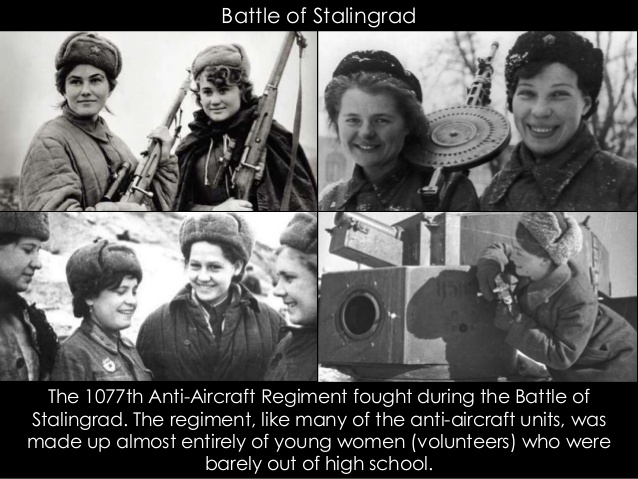
Stalingrad was quickly reduced to rubble, with the German 6th Army controlling 90% of the city. Still, Lt. Gen. Vasily Ivanovich Chuikov’s army held on. With backs to the Volga, they fought for the very sewers of the city, men and women alike reduced to a primitive level of existence. The Germans called it “Rattenkrieg”. “War of the Rats”. A German infantryman wrote to his family, “Animals flee this burning hell of a city. The hardest stones do not last for long. Only men endure”.
As many as 80,000 Red Army soldiers lay dead by the middle of October, 1942. Counting German losses and civilian deaths, the battle cost a quarter of a million lives up to this point, and the fighting still had months to go.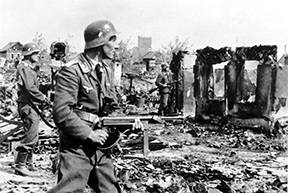
Ice floes in the Volga river further cut off the defender’s supplies, reducing them to cannibalism as a massive Soviet counter-attack was building on the German’s exposed left flank.
By November, General Georgy Zhukov had assembled over a million fresh troops, 1,500 tanks, 2,500 heavy guns, and three Air Armies for the assault on Stalingrad. The rumble of artillery, the “Great Soviet God of War” could be heard across the steppe as the Soviet counter-attack commenced in a blinding snowstorm on November 19th, 1942. It was now the Germans who were trapped.
German General Friedrich von Paulus asked Hitler’s permission to withdraw before they became surrounded. The response was that he should fight “to the last soldier and the last bullet.”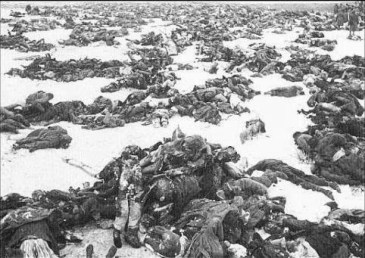
German forward movement on the Eastern Front came to an end in February, 1943, when 91,000 freezing, wounded, sick and starving Germans were surrendered to the Red Army.
Even then, as many as 11,000 Germans refused to lay down their arms and continued to fight from the cellars and the sewers of Stalingrad, holding on until early March.
Disease, death marches, cold, overwork, mistreatment, and malnutrition would all take their toll on the prisoners. Of the nearly 110,000 who went into captivity after the Battle of Stalingrad, fewer than 6,000 lived to return to Germany, after the war.

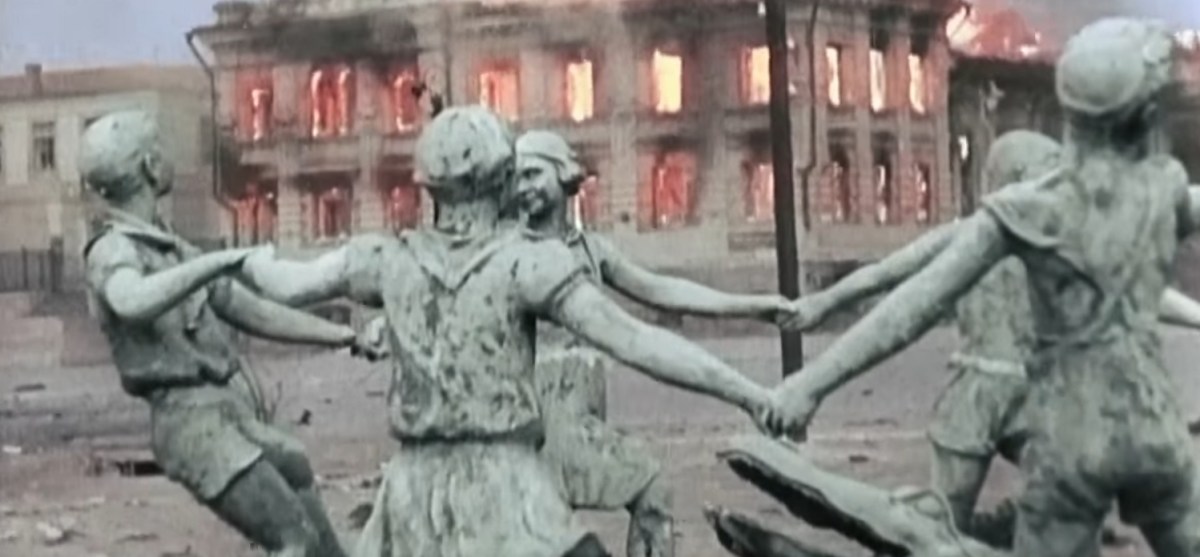

You must be logged in to post a comment.